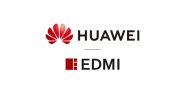Machina Research, a technology and research consulting firm, released the "Standards for the Internet of Things” report, compiled by William Webb, CEO of Weightless SIG. Based on the report, Machina Research said that, despite the proliferation in the number of standards governing the Internet-of-Things (IoT), open standards are expected to take centerstage and will be defining most IoT devices and applications in the future.
According to Machina, at present, there are various competing technologies and platforms for the IoT segment, necessitated by the need for different technologies for different situations and applications. Machina said that OneM2M should become the de facto reference framework for interfacing between multiple communications networks. Other standardization initiatives such as HyperCat, OMA LightweightM2M, the Eclipse Foundation and AllJoyn are continuing to evolve, moving in the direction of abstraction, semantics and discoverability. Machina Research also expects the 'Subnets of Things'(SoT) to dominate at present, and for SoT to give way to IoT, leading solutions across connectivity and service layers have to first be in place.
The Standard for Internet-of-Things, now available at Machina Research, covers standards on communications, connectivity, networking, service layers, data abstraction and discoverability and also assesses standards relevant across specific verticals including automotive or connected buildings. It also lists organisations involved in standards development. Standards and related initiatives covered in this report include the 6LowPAN, AllJoyn, BACnet, Bluetooth (including Bluetooth Low Energy), Cellular (including GSM/GPRS, W-CDMA, LTE), CoAP, Continua Health Alliance, DECT ULE, Eclipse Foundation, EnOcean, FI-WARE, GENIVI, HyperCat, LonWorks, M-Bus, MirrorLink, MQTT, OMA LightweightM2M, OneM2M, Open Interconnect Consortium (OIC), REST, Urban OS, Weightless, Wi-Fi, and Zigbee (and 802.15.4).
“Unpicking the complexity of the standards environment is an important thing for our clients and we’re delighted to have pulled together such an extensive study looking at all the key developments.Clearly the development of standards is going to be critical for the Internet of Things to reach its huge potential. Today the IoT isn’t really worthy of the ‘Internet’ moniker. Greater standardisation is implicit in evolving from what we’ve previously termed machine-to-machine (M2M) to a true Internet of Things.”
- Matt Hatton, Director, Machina Research
“Currently, what has been termed the Internet of Things is a jumble of open and proprietary standards, with a lot of vertical and horizontal silos. Realistically, to move from this ‘Internet of Silos’ to the Internet of Things is going to require standardisation. The emergence of a small number of leading solutions in the various spaces of local connectivity, wide area connectivity and service or application layer would simplify application development and allow industry to coalesce around a few global standards.”
- William Webb, Report Author




















